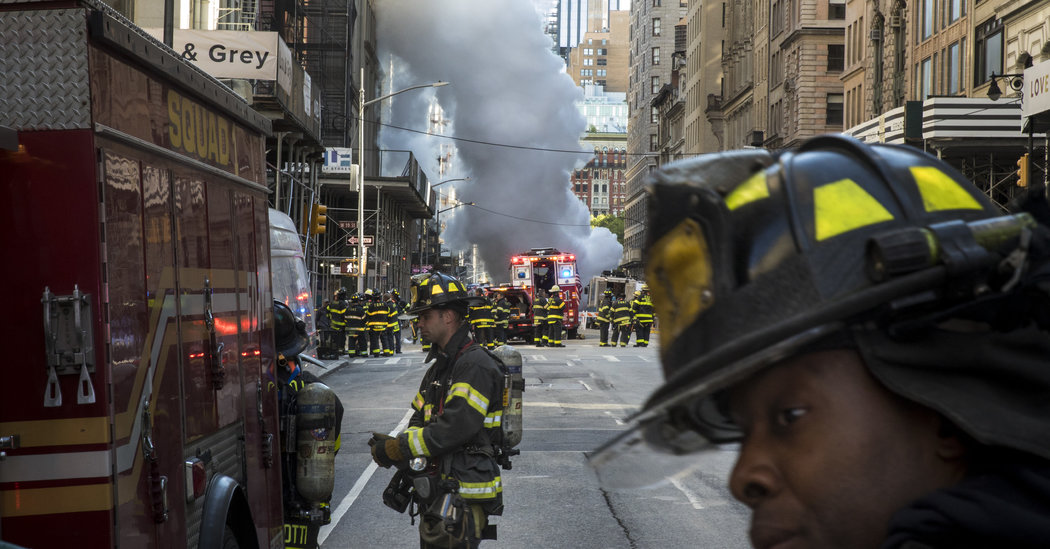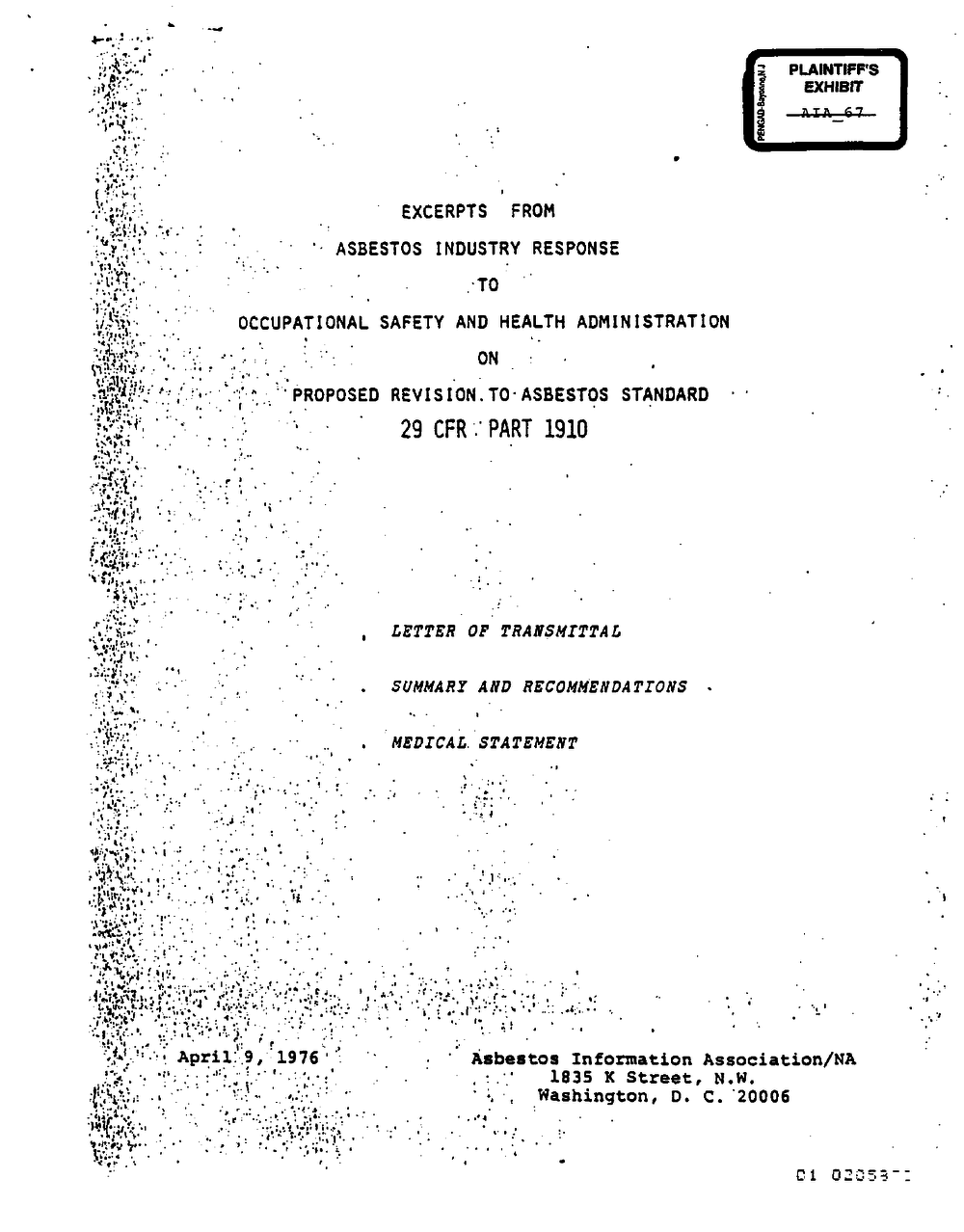Asbestos Regulation: Pushing Back Against Zero
Asbestos has been in the news all this summer.
First came notice of a multi-billion dollar judgment against Johnson and Johnson for asbestos in talc that plaintiffs claim contributed to development of ovarian cancer.
Then there was a pipe explosion in mid-town Manhattan that sent asbestos onto surfaces and in the air, requiring the immediate area to be sealed off.

And now there's news that the EPA is adjusting some of its asbestos testing and regulations. For more on that, see this masterful Twitter breakdown by Melanie Benesh.
I was really honored to be on CBS tonight to talk about #asbestos, but there is a still a lot of confusion. I will try to clear a few things up.
— Melanie Benesh (@MelanieBenesh) August 8, 2018
Private companies with asbestos in their products have long pushed for lax regulation, even as the dangers of asbestos became more widely known and scientifically acknowledged.
Here's one prior episode from 1976, when the newly-created Occupational Safety and Health Administration (OSHA) issued draft asbestos regulations, particularly around acceptable exposures. The Asbestos Information Association (AIA), a leading industry trade group, fought back hard.
Although the document conceded that some levels of asbestos were hazardous, it questioned the wisdom of more rules.
Among other issues, it raised the spectre of economic disruption:
It would be a Pyrrhic victory to achieve a viable manufacturing regulation,
only to discover that the construction regulation thereafter so
threatened or damaged the manufacturers’ markets that they could not
continue to operate profitable.
It then suggested, as did the lead industry, that low level exposures to asbestos might not be as harmful:
The asbestos industry maintains that it is better public policy responsibly to postulate a tolerance level for suspected or acknowledged environmental carcinogens, ponding definite knowledge of a true level of tolerance, and to legislate to that level, than it is to pay the geometrically escalating cost
of attempting to approach zero exposure.
It then concluded that:
... in seeking to control exposures
to environmental carcinogens, the proper point of departure for regulatory policy ought to be a reasonably safe estimate, based upon the best available evidence, of the levels of the substances which man can tolerate and not the adoption of an unsubstantiated theory like the 'one-hit' or zero tolerance hypothesis.
It's now not controversial to say, of course, that no level of asbestos is safe.
If you're curious to know why asbestos has shown enormous staying power, from a regulatory perspective, the lobbying efforts of the AIA aren't a bad place to start. To read more AIA documents, click here.

